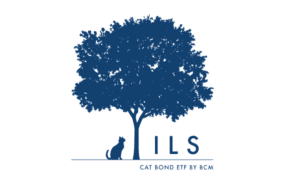Climate change to prolong reinsurance hard market: Goldman Sachs

Equity analysts at Goldman Sachs see climate change both as a driver of increasing underwriting opportunities for the global insurance and reinsurance market, as well as a key factor that can prolong the current hard market pricing environment.
In a recent report, Goldman Sachs equity analyst team explained that climate change and the global climate adaptation agenda present opportunities for the re/insurance market to expand its remit.
Re/insurers are “critical enablers within the financial system for climate adaptation, helping underwrite the costs for the recovery from climate-related disasters, while also benefiting from opportunities to increase their addressable market,” the analysts state.
Property and casualty insurance “helps to soften the financial burden associated with economies’ growing exposure to climate-related events and properly price key risks and externalities associated with climate change,” they continued.
These statements speak to the risk transfer product development opportunities that are emerging, as buyers of protection become increasingly focused on insulating their businesses, finances and people from the perceived effects of climate change and how that could affect weather related loss activity.
Re/insurers have a relatively high alignment to the EU Taxonomy, which means the industry could also gain greater recognition from investment funds focused on environmental, social and governance (ESG) strategies, the analysts also note.
As property re/insurance protects against the impact of weather and climate change related risks, the analysts explained that revenues from this business can be considered “green” under the EU Taxonomy.
Which reads across positively for the insurance-linked securities (ILS) market, where the majority of revenues would fit this taxonomy, given the vast majority of ILS capacity is deployed to cover catastrophe, weather and climate-linked risks.
The efforts to move forward climate adaptation are also creating new opportunities to underwrite climate-exposed risks, particularly through initiatives such as the widely discussed Loss and Damage fund and Global Shield Initiative launched at COP27, Goldman Sachs analysts state.
Moving forwards, as well as the developing opportunity side of underwriting climate-linked exposures and the way that can provide a growth avenue for insurance, reinsurance and also the ILS market, the analysts believe climate change will increasingly be a structural consideration when it comes to market pricing.
“In our view, the reinsurers are the insurers of the last resort regarding climate change and have a key role to play in pricing the economic costs of climate change,” Goldman Sachs analysts state.
Adding, “We believe climate change will be a structural driver for both the demand for and the pricing of reinsurance, and will prolong the current hard market in pricing.”
The reinsurance market’s role in “pricing risks and externalities associated with climate change” is beneficial as it creates “real economy financial incentives to address climate change,” the analysts wrote.
“Indeed, a key debate on the reinsurance stocks is whether the companies are appropriately pricing for the increased cost of weather losses due to climate change, or whether the companies are basing pricing on historical trends and not on the likely future trends.
“The acceleration in reinsurance pricing going into 2023, particularly on the catastrophe side, would suggest the former,” they explained.
They importantly note the repricing opportunity that insurers and reinsurers have, with contracts analysed and then renewed or repriced largely on an annual basis.
ILS markets also have this option, even in longer tenure instruments like catastrophe bonds, where the reset mechanism can provide an opportunity to reassess risk and reprice the coupons paid to investors.
Catastrophe and severe weather related economic losses are on the rise, which the analysts believe means pricing will remain on an upward trend, or at least with upward pressure to prevent returns to previous lows should softening return to the market (as it cyclically tends to).
Weather and catastrophe related losses will remain core to the reinsurance business model, the analysts say, while increased weather events and losses will drive more demand for protection.
They qualify this by stating that, “While writing insurance protection from climate change is likely to offer a material tailwind to property insurance demand, both underlying economic growth and urbanisation should also drive demand.”
If you ask many reinsurance and ILS industry executives you will hear climate change cited within their reasoning for the drivers of the current hard market.
All of which makes continued development and enhancement of risk models especially important, as these will allow reinsurance and ILS markets to price risk as accurately as they can, ensuring capacity can remain available even in zones facing rising loss costs.







